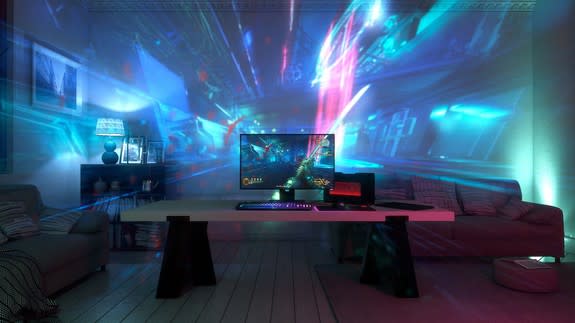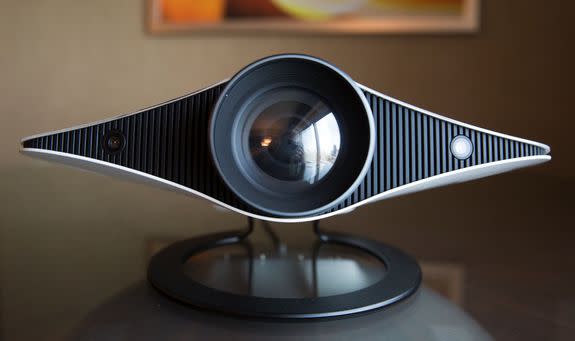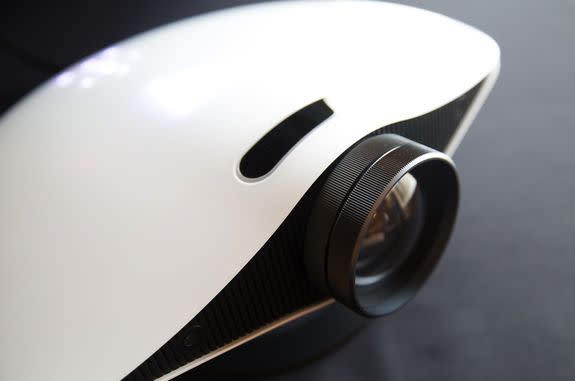This sweet projector extends games off the screen and onto your walls

A few years ago Microsoft showed off a concept at CES called IllumiRoom that used Kinect to extend gaming beyond the TV screen and onto your walls. It could have been a game-changer if Microsoft had released it.
Razer's Project Ariana is the spiritual successor to IllumiRoom and works virtually the same, using projections to extend content experiences outside of the computer screen and into the physical world.
SEE ALSO: Razer's trippy Chroma PC gear can glow 16.8 million different colors of rad
From a hardware standpoint, Project Ariana, which is also a concept device (although one that actually works), resembles your typical portable home projector.

Image: lili sams/mashable
Ariana has an ultra-wide 155-degree fisheye lens and two 3D depth-sensing cameras that can detect where your computer monitor (or TV) is and map projections around it on the nearby walls.

Image: razer
When used for playing games, gamers could see a wider field of view projected outside of the monitor or useful gameplay elements like HUD features, instead of them blocking up valuable screen pixels.
Ariana's core is Razer's Chroma, the configurable smart lighting platform that the company has been slowly incorporating into all of its gaming laptops, keyboards, and mice.
With Ariana, the goal is to enhance content experiences without distracting them.
One applicable use could be for a shooting game, Razer told me. If your gun is low on ammo or if your health is low, the projections could flash or light up red to alert you to reload or a heal up. The lights are an additive element that ups the immersion factor on the periphery and doesn't overshadow what's happening on your main screen.

Image: razer
Ariana's not just for gaming. Razer envisions movies integrating "mood lighting" to further set the tone. For example, for a horror movie, maybe the projections are dark and bloody and pulse to amp up the fright factor. Or if you're watching a documentary about polar bears, maybe the lighting tries to simulate the coldness and snowiness of the North Pole. The possibilities are endless, so long as content creators decide to create these small extra experiences to augment their content.
Creating Ariana experiences shouldn't take much effort. Razer told me it took less than a week for the developers of the game Shadow Warrior 2 to create an Ariana-ready experience.
"This is the future of Razer Chroma as we see it," says Razer CEO Min-Liang Tan. "We are working toward new video projection technology designed to place users in their games for total gaming immersion. Having a game literally surround a gamer completes the entire ecosystem of gaming, bridging the sensory gap between player and game."
Razer's calling Ariana a "concept" device, but with the opening of the new Chroma API and thousands of games already supporting Chroma lighting, it's got a better chance at becoming a real product than some of Razer's past concept devices.
Whatever form it takes, we're ready for Razer to take our money.

Image: lili sams/mashable

Image: lili sams/mashable

Image: LILI SAMS/MASHABLE

Image: LILI SAMS/MASHABLE

 Yahoo News
Yahoo News 